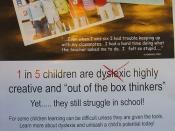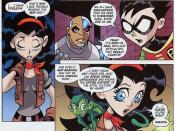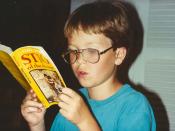DyslexiaTheoriesand TreatmentsDyslexia is not an illness or disease it is a brain-based disorder that causes problems for people when reading, writing, spelling, doing math complications, speaking, and even listening. The core of dyslexia is people with it have phonological awareness difficulty, meaning the brain's inability to translate images from the eyes completely and correctly to the ears and mouth, or the ability to understand that spoken language is made up of sound units.
To understand dyslexia you must be aware of the causes, effects, strategies, and teaching methods for coping with the disease. Dyslexia means having difficulty with words in reading, spelling and writing - in spite of having normal intelligence and ability.
The word dyslexia was first mentioned in 1887 by a professor by the name of R. Berlin. Scientists to this day are still unsure on what causes dyslexia, although they have a good idea of some of the factors that could have something to do with dyslexia.
One cause of dyslexia is thought to have a genetic component. For example, it is common for a child who has been identified as having dyslexia to also have one or more relatives who also have learning difficulties. Dr. Larry Cardon, a statistical geneticist, found evidence that "a gene for dyslexia sits on chromosome number six, which is one of the twenty-three.
With the technical advances that have come about in brain-scanning in recent years, a lot of research has been carried out examining the brains of dyslexic people.
The brains of dyslexic children show an unusual variation in left- and right-side activity. Recent research has found that, whereas non-dyslexic children use the left side of their brain for language work, dyslexic children have to use the right side as well. This is not the side of the brain that...


